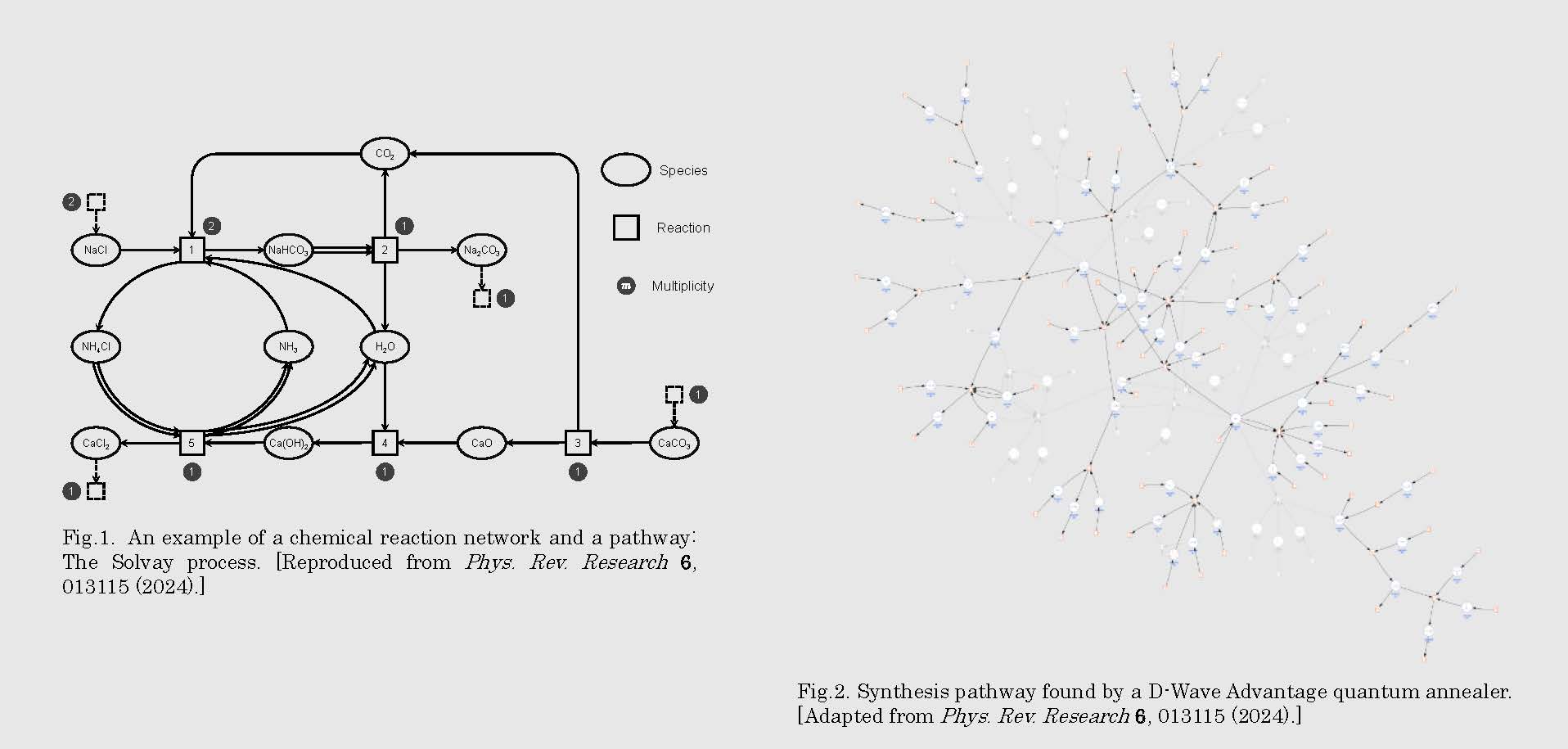
RIES
Research Institute for Electronic Science, Hokkaido University
北海道大学
電子科学研究所

LAST UPDATE 2024/08/09
-
研究者氏名
Researcher Name水野雄太 Yuta MIZUNO
助教 Assistant Professor -
所属
Professional Affiliation北海道大学 電子科学研究所
附属社会創造数学研究センター データ数理研究分野
Research Institute for Electronic Science, Hokkaido University
Research Center of Mathematics for Social Creativity, Molecule & Life Nonlinear Sciences Laboratory -
研究キーワード
Research Keywords化学動力学
反応速度論
化学反応ネットワーク
力学系理論
動的モード分解
数理最適化
組合せ最適化
列挙アルゴリズム
量子コンピュータ
イジングマシン
Chemical Dynamics
Chemical Kinetics
Chemical Reaction Networks
Dynamical Systems Theory
Dynamic Mode Decomposition
Mathematical Optimization
Combinatorial Optimization
Enumeration
Quantum Computers
Ising Machines
- 研究テーマ
Research Subject -
複雑化学システム解析のための量子/イジング計算技術
Quantum/Ising Computing for Complex Chemical Systems Analysis
研究の背景 Background
細胞や化学プラントなどの複雑化学システムの解析に関する下記の問題は,従来計算技術では膨大な計算量を要する計算困難な問題である.
(1) 化学反応ネットワーク上の経路探索問題(応用例:有機合成計画,代謝経路解析)
(2) 化学反応における原子マッピング問題(応用例:機械学習による反応予測,代謝経路解析)
(3) 化学反応システムの確率論的速度論解析(応用例:細胞動態の理解・予測・制御)
The following problems for complex chemical systems analysis are computationally hard problems for conventional computers:
(1) Finding pathways in chemical reaction networks (applications: organic synthesis planning, metabolic pathway analysis)
(2) Atom mapping of chemical reactions (applications: machine learning for reactivity prediction, metabolic pathway analysis)
(3) Stochastic kinetic analysis of chemical reaction systems (applications: the dynamic analysis of biological cells)
研究の目標 Outcome
本研究では,複雑化学システム解析のための量子/イジング計算技術を開発する.組合せ最適化問題に特化した専用計算機であるイジングマシンを用いることで,上記の問題(1)(2)の解法の効率化を目指す.量子重ね合わせや量子もつれなどを活用し計算をおこなう量子コンピュータを用いることで,上記の問題(3)の解法の効率化を目指す.
In this study, we develop quantum/Ising computing techniques for complex chemical systems analysis. We aim to improve the efficiency of solving the above problems (1) and (2) by using Ising machines, which are specialized computers for combinatorial optimization problems. We also aim to improve the efficiency of solving the above problem (3) by using quantum computers that perform calculations utilizing quantum superposition and quantum entanglement.
研究図Research Figure

Fig.2. Synthesis pathway found by a D-Wave Advantage quantum annealer. [Adapted from Phys. Rev. Research 6, 013115 (2024).]
文献 / Publications
Yuta Mizuno and Tamiki Komatsuzaki, Finding optimal pathways in chemical reaction networks using Ising machines, Phys. Rev. Research 6, 013115 (2024).
Yuta Mizuno and Tamiki Komatsuzaki, A quantum algorithm for dynamic mode decomposition integrated with a quantum differential equation solver, arXiv.2310.17783v3 (2024).
研究者HP
- mizuno
 es.hokudai.ac.jp
es.hokudai.ac.jp - http://mlns.es.hokudai.ac.jp